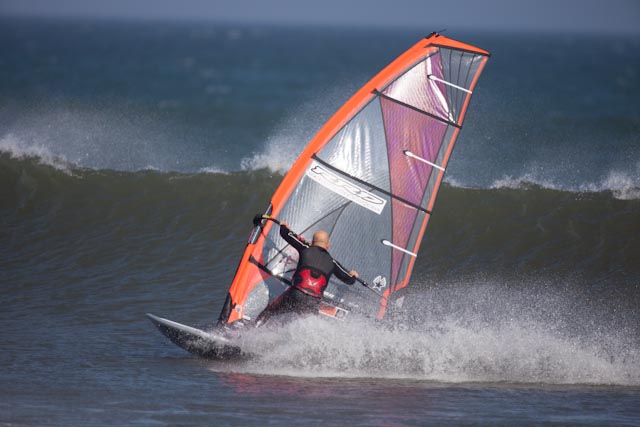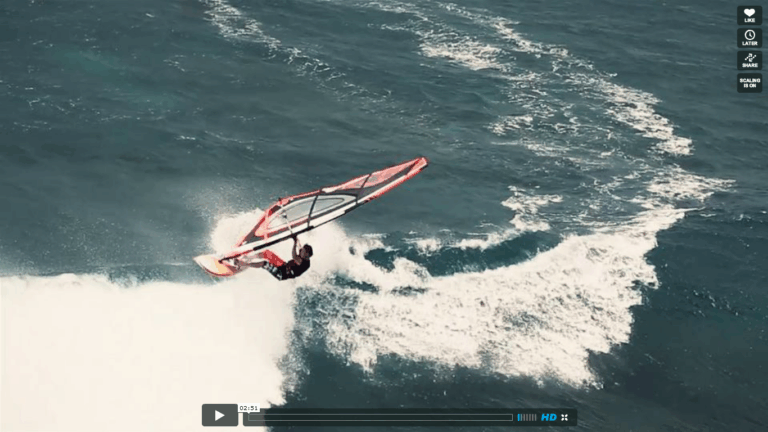Over to Jem Hall, our technique guru, to see what has to say in his new series of articles examining a multitude of windsurfing skills and techniques and aptly named ‘The Moves That Matter.’ This time round Jem further highlights the links from your fundamentals and begins to unravel the keys to learning and boosting your carve gybes and highlights this with a series of pics and talking you through them.

I hope you have enjoyed my recent articles in my new technique series, the Moves That Matter (MTM), and you can check the technique section for a recap should you so wish. Now we are getting down to some Gybe talking please take the time to refresh your memory with the previous article covering how YOU can take action learn and boost your gybing here.
This month, in the second piece of a mini series on carve gybes and freemove / ride sailing I will look at some pics of both me and my Reliable Rhodes rippers, from my recent June coaching clinics. Next month will see me presenting video tips.

As a recap I will list the main gybing skills and drills that I suggest you should be equipped with:
- Stance
- Tacks
- Light wind skills
- Back hand, back hand, back hand
- Unhooking
- Bearing away into your gybes
- 360s
- Duck gybes
The pics I will present will look to show that picture is worth a thousand words but I will also embellish them by describing the action and good practice being demonstrated. Try not to think of the gybe in its entirety, yet look for competency in key areas of it, i.e. it is tough to get a good exit without a strong entrance.
Most important – a fast, effective and efficient stance
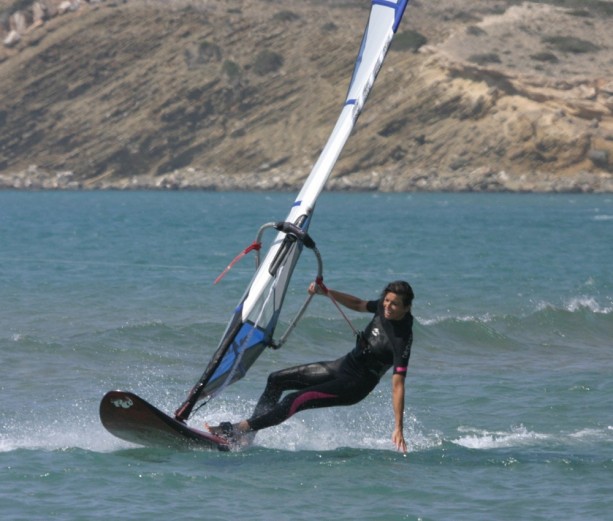
Maria has come along way with me and her great stance means she will enter the gybe with speed. Check out the upright rig, board locked down with a straight front leg (here in abbreviated SFL) and a bent back leg (BBL) with the sail sheeted in from low out board hips.
The Approach

Mads has unhooked smoothly and turned downwind (check his track) and is outboard and low with a SFL and BBL, extended arms to keep the sail powered and the board flat. All this keeps vital entrance speed!
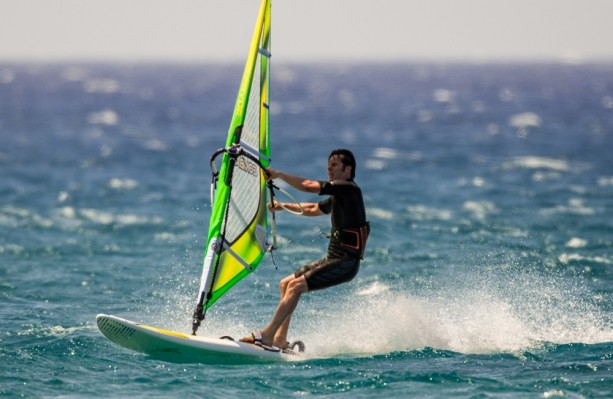
Henrik is pulling down on the boom to flatten the board and the sail is still sheeted in to act as an engine on the approach. His back foot is right back by the back foot strap and he is now ready to roll across the rail in his carve.
The carve – roll across the rail and show the sail
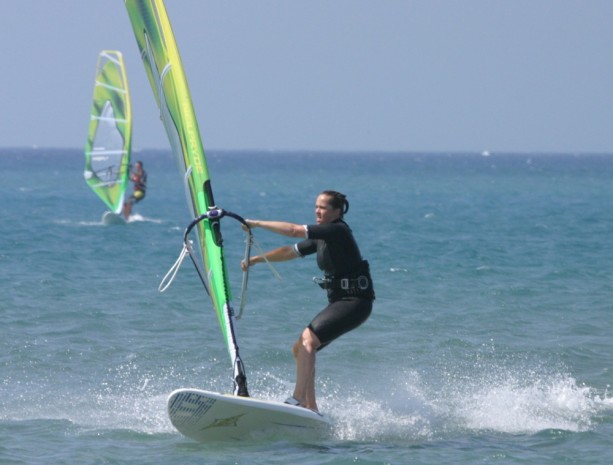
Heather has approached the gybe very well and from here she can tip the rig forward and begin to roll across the rail by bending her ankles and leaning in to the turn. Her straight front arm (SFA) keeps the nose down and the rig away and this is very important.
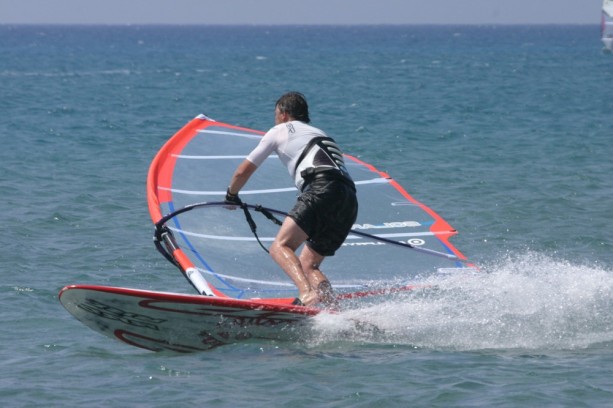
Ok, we are cheating here, Jacob is about to do a 360 but to get him to really attack his carves I got him trying these and he is in fine form. The sail is showing to the water, inside of the turn, his ankles are bent and his front hand is back on the boom to drive the rig forward.

Henrik is showing the sail on a SFA, which keeps the nose down and the board carving smoothly and his wake tells you that he is applying gradually increasing back foot pressure through the ball of his foot to carve the board so it goes round the corner
The middle of the turn – open the sail and moves your hips across then switch your feet

Micheal made very few gybes on his clinic and yet look at him here – he is in a perfect position to. Back hand way down the boom, opening the sail and swinging the hips to the inside of the turn and starting to look out of it.
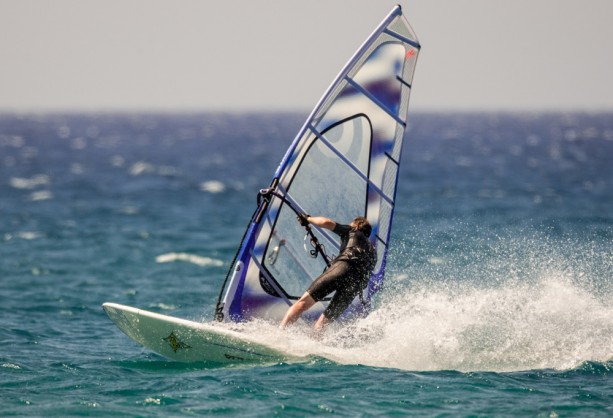
Peter’s gybe ended shakily but what is most important is that he is going for it! He is really pushing down through back foot to carve the rail hard, check out his wake. People often ease the pressure on the back foot – carve hard to take the board through the turn.
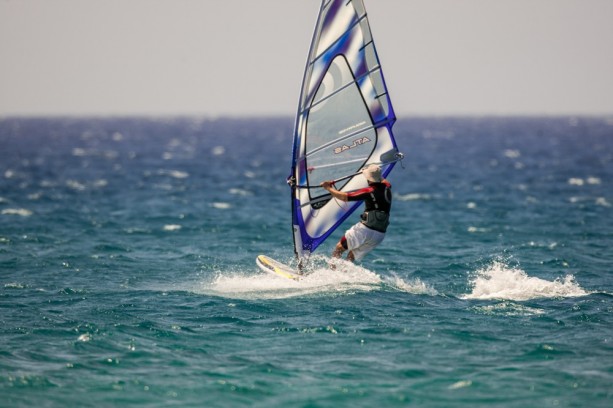
Dan works very hard on his sailing and his reward is this. Hands perfectly positioned way down the boom so that he can punch open the sail with the backhand. His hips can then swing across to get the weight over the back foot in readiness for the front foot to switch across. Rig to the outside, hips to the inside.
The exit – clew first, rotate the rig, then get down James Brown

Huw is low and outboard and could even plane clew first here. From this position he is low and in control, so he has slid his front hand from the front harness line to the front of the boom in readiness to rotate the rig and finish.
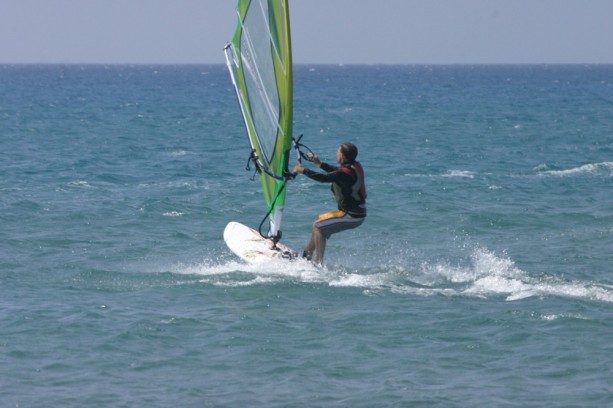
Sean is outboard and low and from here he can swing the rig round to rotate it and, crucially, be in a position to carve the board through his heels as he looks forward. This action will turn the board through the last part so you collect the rig across the wind in a strong position.
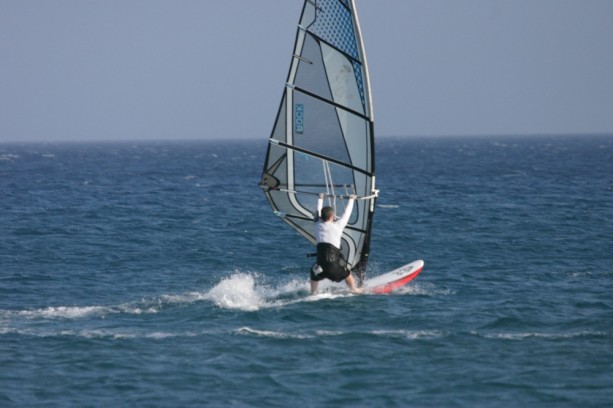
Dave has finished the gybe and got right on down on extended arms with a SFL & BBL, so he can push the board downwind to get planing and then get in the front strap BEFORE he hooks in. This can be the secret to windy planing gybes – get down James Brown after all your moves.
Moving on up – trying other moves to help you gybe
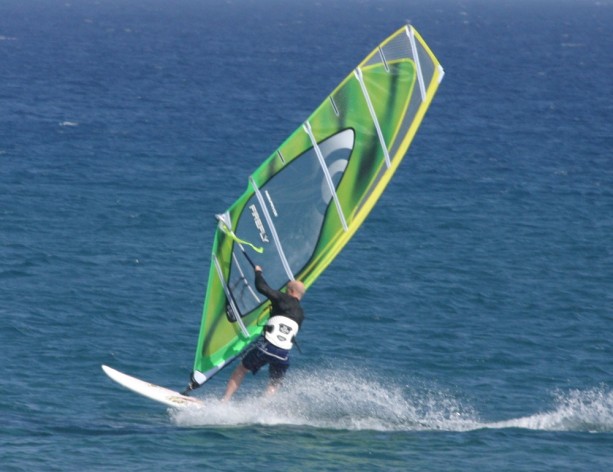
Roger is not the duck gybe master but he goes for them and it has helped his gybes. If you don’t go you won’t know. Enjoy your sailing and try new moves.
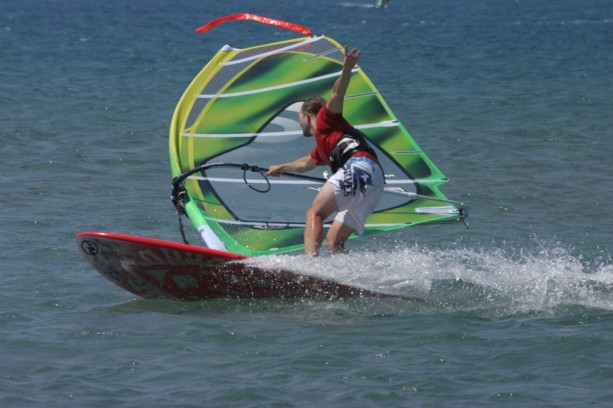
I urged Jon to try some one handed 360s to feel where the rig wants to go in this move and it really helped him to commit to the carve and concentrate on feeling the rail as he carves through it. The rig is away and the backhand is in perfect placement, for this move, as he really leans in and hammers the rail.
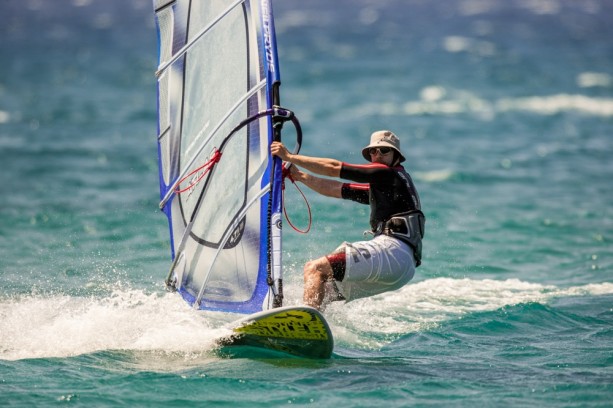
Dan, and many of my carve gybe learners and legends are very competent at tacking so they can try more gybes and stunts. The move also contains the key actions of looking where you go, hip swinging and a straight front arm (SFA) backed up by good preparation.
How does coach do it – exaggerating key actions
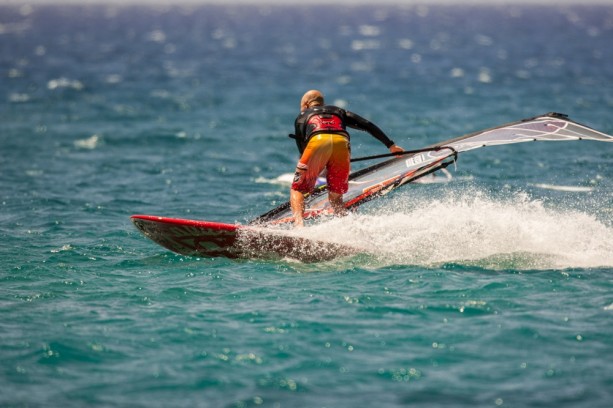
As the coach I will exaggerate key actions and push the moves that bit further. In this gybe I am over sheeting the sail to depower it. You can see this makes the rig twist at the head, lightens the sail and really commits me to showing the sail and feeling the rail. All aided by my backhand being way down the boom.
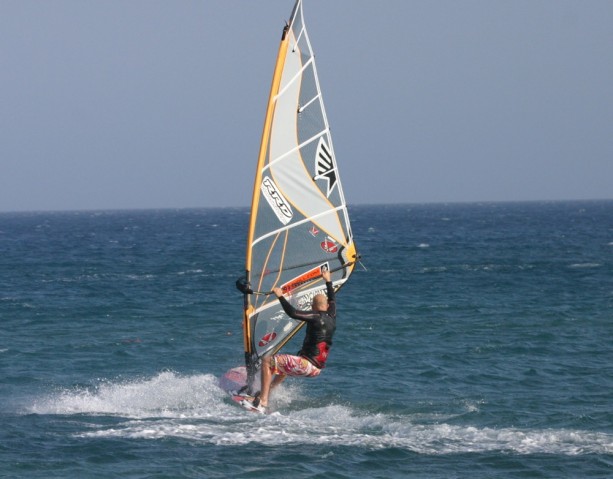
People make a real breakthrough in their gybing when they aim to plane clew first in the exit phase – as this keeps them low and outboard and in control and makes the pilot and not the passenger. As I am clew first I am very low, with wide hands and I really pull down on the boom whilst I carve subtly through the heel of my back foot.
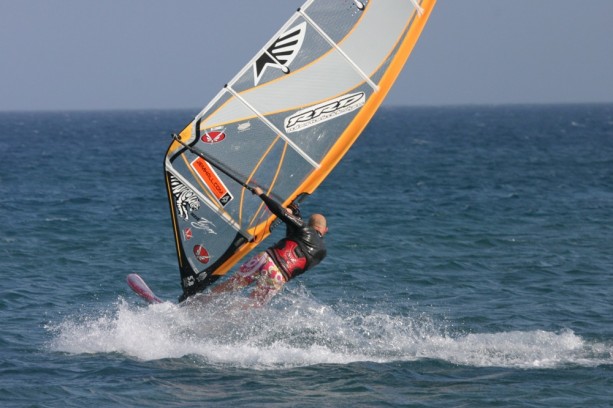
I practice what I preach in that I throw in duck gybes to enjoy them and get my hips moving in the right directions. Here my rig moves out and my hips move across and to the inside to carve the board and, come on baldy, I should be looking out of the turn more!
So there you have it, lots of tips and skills for you to consider and practice. If you can’t wait for the next installment then please check out some of my technique clips on the Boardseeker technique clips on our sister site
Or you can check out my Live Coaching chapter on carve gybes, from Beginner to Winner, right here.
Of course, you will learn so much more on one of my fine coaching clinics as you can get all this live, instant and direct with the conditions to put it in place, pimping done now.
“Be ready for tomorrow, but live today.”
Clark Jolly, fellow Southsea, Hampshire waterperson.
If you seriously want to improve and have a fantastic holiday book on one of Jem’s coaching clinics NOW! For 2012 he has places left for reliable Rhodes in September, and the pièces de résistance, PSC, Baja in August and Jeri, in beautiful Brazil in November.
Check out the Sportif website with whom Jem runs many of his clinics.
Jem’s brand new wave technique movie Winner to Wavesailor is ready to PURCHASE NOW, and for all your fundamentals he has Beginner to Winner. You can now buy all 3 movies, including Freestyle, in the Trilogy box set.
RRD boards, Ezzy Sails, Flying Objects, Big Salty Weather and Prosport Sunblock sponsor Jem Hall. Check out jemhall.com for more details.



